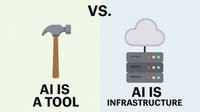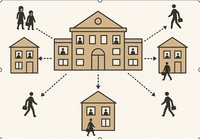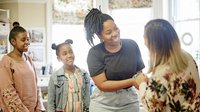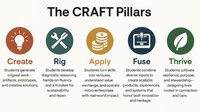At a recent Digital Transition Event in Atlanta, the Learning Counsel held a panel discussion featuring instructional technology officials from three of the largest and most successful school districts in Georgia. With this panel, you might expect the discussion to focus on technology specifics – types of devices and network capabilities – but the success of these districts comes from a laser-like focus on the learners.
Monika Davis is the Interim Chief Information Officer at the Dekalb County School District. It’s the 3rd largest district in Georgia, serving nearly 102,000 students with 140 schools and centers and 15,500 employees, including 6,600 teachers. Students and parents speak over 140 languages and represent over 180 nations. Davis says that technology allows her students to take more control of their learning. “When we were in school, we knew what options were available for us,” said Davis. “For our students, we see technology growing at an exponential rate. Because of this, we don’t know what is going to be out there for them in the future, so we need to teach them how to think, not what to think. When you’re looking at student-centric learning, you have to focus on critical thinking and innovation. It’s not enough to say, ‘I’m creative.’ Creative is good, but you need to be able to do something with it. You are going to need students who can think for themselves, and student-centric learning is key to that.”
Dr. Aleigha Henderson-Rosser, Executive Director for Instructional Technology at Atlanta Public Schools said “Student-centric learning is not necessarily new, but we may be approaching it with some fervor now because we understand that is the best way for students to learn. We are fortunate in Atlanta Public Schools; one of the things we have adopted is a gradual release model of instruction. The teacher is ‘I do,’ the students who work in a group are ‘we do,’ and the students by themselves are ‘you do.’ In instructional technology, we’ve adopted that, and we’re excited to be working with different modalities. We’ve done that by giving the students access to whatever they need. What are they going to produce or create after they learn this, so they can be assessed and show that they have learned a particular standard? What resources are we giving them to work through whatever that standard is? That’s how we see our work in instructional technology. We now have a single sign-on for every resource that’s curated by our digital learning specialists; we have one in every subject area including Science, Math, ELA and Social Studies. To have a digital learning specialist for every content area allows them to curate and focus very specifically on what kind of products should be created to learn their particular standards. We have resources available for both teachers and students to go learn, to do, to think critically and communicate all on their own, giving them their own agency to produce whatever they need to do around their own student learning.”
Tricia Kennedy is the Executive Director of Instructional Development and Support at Gwinnett County Public Schools, the largest system in Georgia and two-time winner of the Broad Prize for Urban Education. According to Kennedy, “We have to make sure that the work we are doing in our schools is based on ‘Why.’ We’re not just doing technology for technology’s sake. As educators, we’ve always been about student-centric learning, we just didn’t to call it that. We want to make sure that every student leaves us ready for successful citizenship and adulthood. But that has changed. What that means to be prepared for citizenship and adulthood has changed so much and is continuing to change. It’s radically different from when many of us were in school. Now people in the workforce will change their jobs somewhere between 10 and 12 times before the age of 45. Preparation for students to be ready and able to navigate that world means we have to be able to give them choice and individualization. I don’t think that’s possible without technology. It can’t be done without technology taking some of that heavy lift to allow students to have those opportunities and choices as we prepare them. If we don’t make our opportunities student-centric, if we don’t rely on technology, we’re not going to accomplish our mission, which is having students ready for successful citizenship and adulthood when they leave us.
Also, according to Dr. Henderson-Rosser, “It’s not about the device that kids have access to, but that you have access to high speed reliable Internet. That is a huge issue for us.” Her district has received grants from cellular carriers T-Mobile and Sprint to provide home Internet access and devices for their middle and high school students. “Whatever else we do in the district,” said Henderson-Rosser, “If they can’t go home and do it, it doesn’t matter.”
Click on the video below to hear more of the discussion and see what these districts are doing to prepare their students for a world that promises to be very different than the one their teachers and parents entered. There’s a lot to learn in this video – things you can see today and use in your own districts tomorrow.











